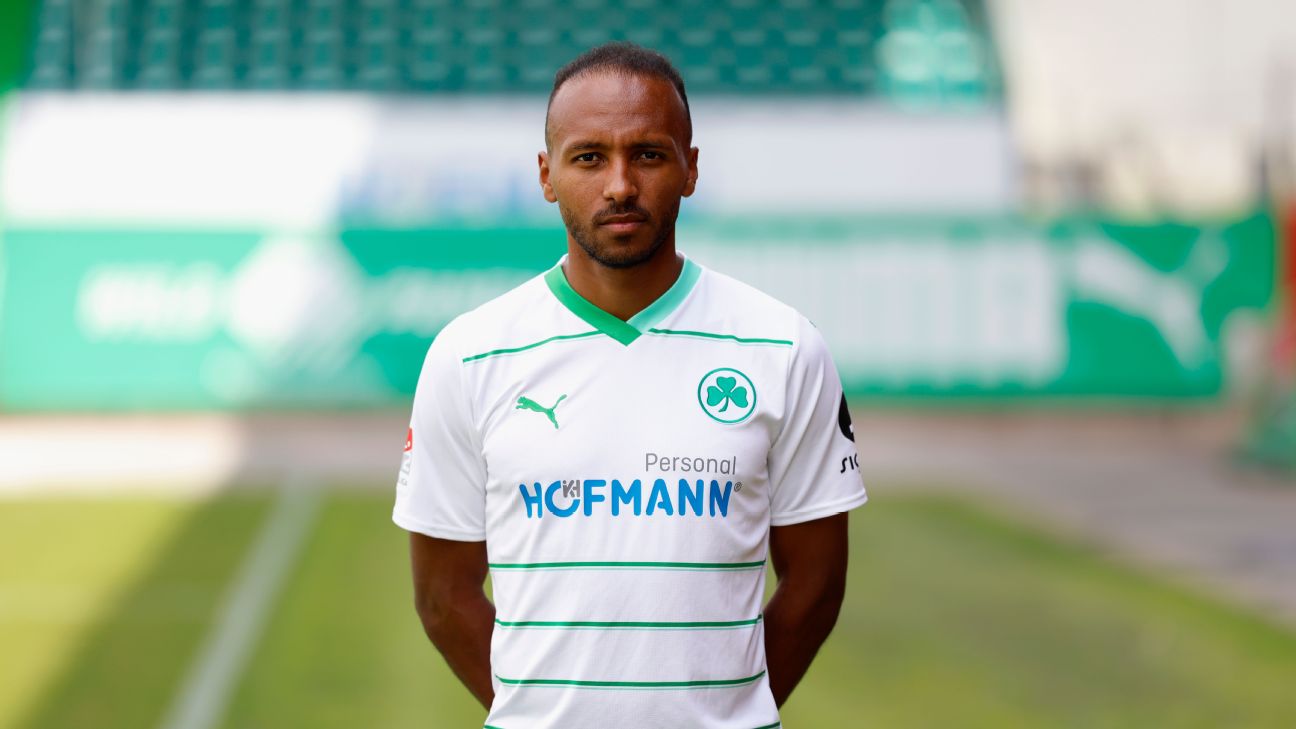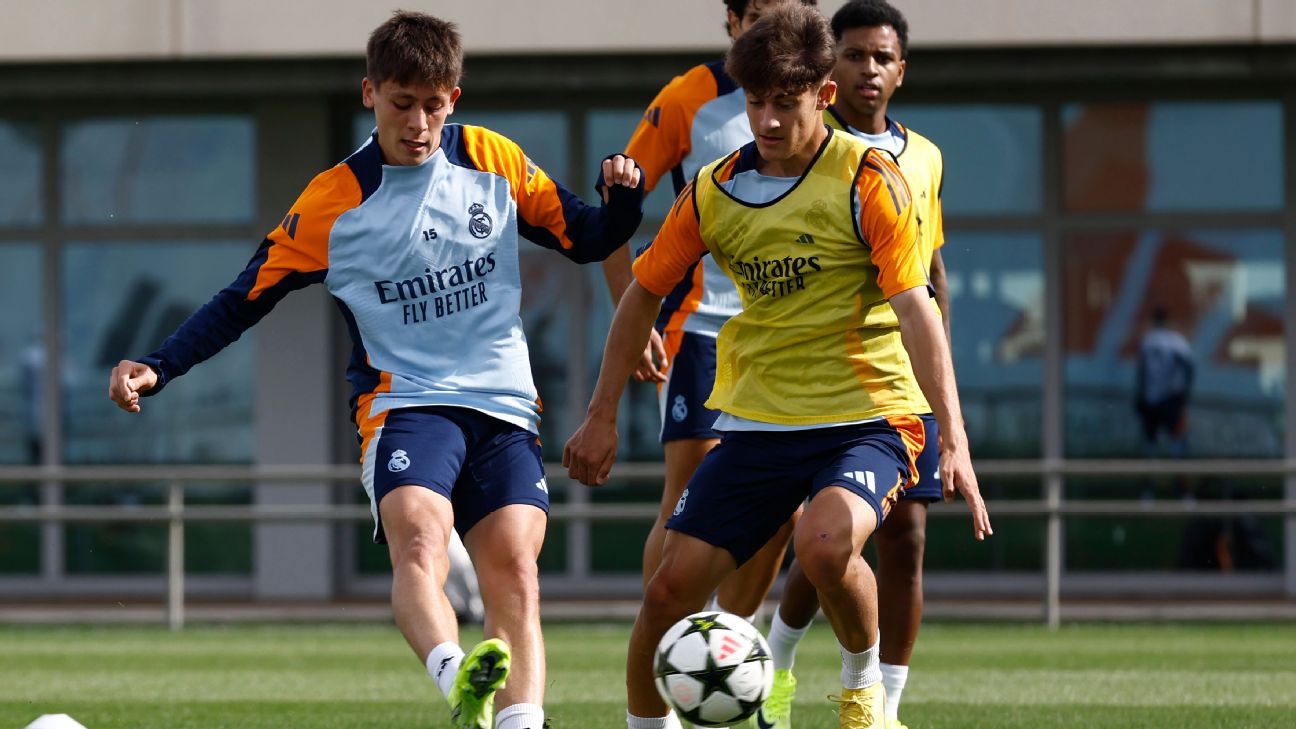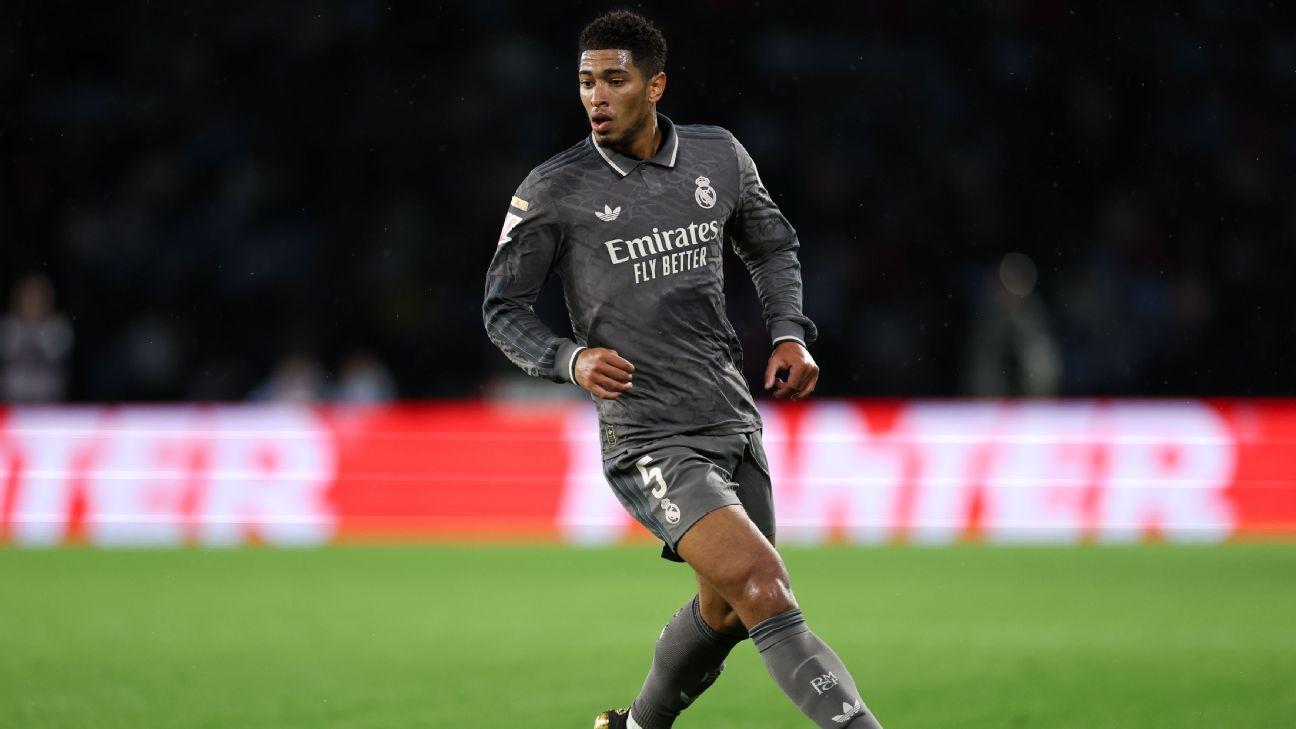Julian Green continues to put together one of the unique careers in the history of American soccer. From being dubbed “the next big thing” to sliding off the radar of the U.S. men’s national team, from Bayern Munich attacker to Greuther Furth midfielder, he has borne many labels during his decade as a pro. His career might soon take another interesting twist.
Born in Tampa, Florida and raised in Germany, Green had played for Bayern Munich in the Champions League by age 18 and scored in the World Cup at age 19. He made 15 total appearances for the U.S. national team in the following years and scored three more goals while oscillating between a number of positions. But his time at Bayern fizzled out, and he eventually landed in the 2. Bundesliga, Germany’s second division, with Greuther Furth.
His time with Furth has been eventful. He led his team to promotion with steady ball-handling and a burst of goals, lost his rhythm as Furth quickly got relegated, and now has once again become one of the most productive players in the second division, simultaneously one of the safer midfielders and more proactive attackers in the league.
– Stream on ESPN+: LaLiga, Bundesliga & more (U.S.)
– Read on ESPN+: Projecting how USMNT stars will do in Europe
With his contract expiring at Furth next summer, Green, now 28 years old, is facing an interesting choice. Should he remain in Germany and perhaps remain with the club with which he has played his best ball? Or should he look to sign stateside with a Major League Soccer club to play closer to family — and perhaps try to get back in the national team picture?
Speaking to ESPN, Green made it clear he thinks he still has something to offer the USMNT if head coach Gregg Berhalter were willing to give him a chance. But for now, Green remains focused on his club career, which is going as well as it ever has.
Still a standout in Germany
When Furth earned promotion in 2021, the team featured future Bundesliga stalwarts like David Raum (transferred to Hoffenheim in 2021, then RB Leipzig in 2022), Paul Seguin (transferred to Union Berlin in 2022), Jamie Leweling (transferred to Union Berlin in 2022) and Maximilian Bauer (transferred to Augsburg in 2022), plus midfielder Timothy Tillman, who moved to LAFC in 2023. But Green glued everything together — among regulars, he was third on the team in goals and expected goals (xG) per 90 minutes, he was fourth in chances created per 90, and he was second in pass completion rate into the attacking third.
Furth’s time in the Bundesliga was short and frustrating, but two years on, Green is playing better than he did when Furth got promoted.
“It was a totally different style of play [in the Bundesliga season] because most of the time the opponents had the ball more than we did,” Green told ESPN last month. “It was different than the year before, when we had more possession than the opponent in almost every game.”
Indeed, while Furth enjoyed 55% possession during their promotion season, it dropped to 43% in the Bundesliga. The team struggled drastically as a result; they pulled just one point from their first 14 matches, and while they improved quite a bit from there, relegation had been all but confirmed by Christmas.
With the team attempting to defend deep and counter, Green also got lost in the shuffle. He had the team’s highest pass completion rate (83.4%), but a year after playing 2,233 minutes and producing nine goals and two assists from 36 chances created, he managed just 1,049 minutes, no goals or assists and only 10 chances created.
Back in the second-division 2. Bundesliga, Furth started poorly once more. Thirteen matches into last season, they had just one win and 10 points, again finding themselves in last place. But under new manager Alexander Zorniger, they found their aggressive streak again. So did Green.
“We had a change with the coaching staff, and they stabilized us,” Green said. “Every coach has his own style, and [Zorniger] really likes to press high and play intense soccer — press high if we lose the ball and immediately get it. I think that’s a style that fits to me, and I think we had a good start with him.”
“Julian is reliable and an example for a player with a certain vitality who is still ready to expand his tool box,” Zorniger told ESPN. “He also has found his way back to his scoring quality in the last half-year. He has a good balance between football quality and being responsible for fulfilling his tasks on the pitch.”
Under Zorniger, Furth played at nearly a promotion-level pace and finished safely mid-table. Green himself scored five goals in his final 10 matches of the season and recorded a career-first brace against Eintracht Braunschweig.
Erst mit dem Kopf, dann mit dem Fuß ⚽️🥅
Am Wochenende hat @J_Green37 seinen ersten Doppelpack in der 2. Liga geschnürt👏#Kleeblatt #Fürth pic.twitter.com/va4zPRedcH— SPVGG GREUTHER FÜRTH (@kleeblattfuerth) May 16, 2023
What clicked for him late in the season?
“Um, it’s hard to say,” Green said. “I think at the end you always have to believe in your style of play and what you can bring to the team. It’s always about small details. I had some good games where I didn’t score or didn’t give an assist, so then sometimes people don’t really recognize that you still played well. My goal is just to keep improving and set new goals and be effective on the field.”
“It’s never easy if you are coming from the Bundesliga, coming back to the second division,” he added. “It was hard. We had a very bad start. If you are coming from the Bundesliga, maybe people think, ‘Oh, they’re coming from the Bundesliga, they have to be better than the second-division teams,’ but it’s a pretty hard league.”
In the early part of his career, Green was used more as an attacker. Then-national team coach Jurgen Klinsmann saw him as a winger, but other managers like Carlo Ancelotti, then at Bayern, thought his skill set was best suited to a center-forward role. Klinsmann’s interim successor, Dave Sarachan, thought Green was best suited for a No. 10-type role, the guy who complements the center-forward.
At Furth, he has found his niche as a central midfielder, though his attacking instincts are never far from the surface. Green recorded an assist and four chances created in their 2023-24 opener, a 5-0 win over Paderborn last month. He hit the post in a one-goal loss the next week against Holstein Kiel, scored against Hannover 96 on Sept. 3, and assisted a set-piece goal in last weekend’s derby draw with Nurnberg.
These stats somehow come from the same player:
• Green is currently fifth in the 2. Bundesliga in assists (two), second in expected assists (1.7) and sixth in chances created (17). From the ever-important Zone 14 — the area in the center of the pitch and just outside of the penalty area, one of the most important areas for an attacking team to control — he is fourth in touches (59) and 10th in pass completions (24). Sarachan’s idea of him as a creator and complementary forward makes quite a bit of sense.
• Green is also 22nd in pass completions (235) and 14th in total touches (410), and he can force the issue when needed — he’s ninth in ground-duel wins (29) and second in fouls suffered (14). Within the middle-third of the pitch, he’s also fifth in the league in total touches (226) and 12th in ball recoveries (19). He’s a midfielder at heart.
• Green also ranks 11th in total touches in the attacking third (140) and 12th in shot attempts (15). Stretching back to mid-March, he ranks seventh in both goals scored (six) and shot attempts (38).
While it doesn’t count toward his totals, he also proved his pressing abilities and an opportunistic streak with a goal in a summer friendly against Liverpool, stepping in front of a goalkeeper’s pass and poking it into the net.
Unfortunately, despite what might be Green’s career-best work, after six matches Furth again find themselves low in the table. The team’s xG differential ranks a solid 10th overall, which could be a solid sign moving forward, but they’re 16th in the table with five points after three losses and two draws. They even started slowly in their promotion year — three points from four matches — but rallied in September. Whatever ambition they might have, they can’t wait too much longer to shift into gear.
An expiring contract and the appeal of MLS
Between 2013-17, Green played at Bayern, Hamburg (on loan) and Stuttgart before finally landing with Furth, where he has found the stability his early career lacked. Now into his sixth season with the Bavarian club, and with his contract expiring next summer, he finds himself at a pivot point: Stay with Furth? Stay in Germany? Head west?
“Of course I’m happy here, and I still have one more year here,” he said. “Maybe there will come more because I am glad to be part of Furth, but I can definitely imagine playing in MLS one day. My dad still lives in Florida, so that’s a big reason, of course.”
The 29-team MLS is vast and features every playing style imaginable. The New York Red Bulls in many ways match Furth’s high-pressing style. St. Louis City has been crafted in a German image with sporting director Lutz Pfannenstiel and Bundesliga veterans like goalkeeper Roman Bürki and midfielder Eduard Löwen. But Green’s father makes the state of Florida itself a draw.
“If I could, of course I would probably choose [a Florida club] because I’m born there, my dad lives there,” Green said. “But the style of play has to fit, and you have to be happy to live there and be comfortable there.
“We are also recognizing in Germany how MLS is getting bigger and bigger every year,” he continued, “especially with [Lionel] Messi right now. So of course MLS is always an option for me. But right now I’m focused on Fürth and on this season. I want to have a good season, and then we’ll see where I am.”
There could also be another draw for coming to the States. If Julian Gressel’s example is any indication, it might not be too late for Green to get back on the U.S. Soccer radar.
On Jan. 25, Gressel, a 29-year-old late-bloomer playing at an increasingly high level for the Vancouver Whitecaps, earned his first cap for the U.S. national team. The wingback/midfielder has made five more appearances since. After coming up through the youth ranks at Greuther Furth, Gressel played for Providence College in the U.S., then stuck around to eventually play for MLS teams Atlanta United, D.C. United, Vancouver and now Columbus. And after becoming a U.S. citizen in November, Gressel quickly became a viable option for at least a backup role with the USMNT.
Another example comes via Timothy Tillman, Green’s Furth teammate from 2020-23. In the German first and second divisions with Furth and Nurnberg, he averaged 0.15 combined goals and assists per 90 minutes, but he came to LAFC in February, and in his first season he is averaging 0.31. A dual-citizen like Green, the 24-year-old Tillman has yet to play for the U.S., but he felt good enough about the situation to apply for a one-time switch to represent the U.S. in May. And unlike Green, he was on the 60-man preliminary roster for the summer’s Gold Cup.
Green will turn 29 in June. He isn’t a threat to steal a first-string spot from players like Tyler Adams, Weston McKennie, Yunus Musah or Gio Reyna (depending on your view of where Reyna should play moving forward), but the pecking order after that quartet remains underwhelming.
Outside of the four stalwarts above, here are the midfielders listed in ESPN’s USMNT big board from last week: Kellyn Acosta (LAFC), Gianluca Busio (Venezia), Johnny Cardoso (Internacional), Luca de la Torre (Celta Vigo), Richie Ledezma (NYCFC), Djordje Mihailovic (AZ Alkmaar), Aidan Morris (Columbus), Paxton Pomykal (FC Dallas), Cristian Roldan (Seattle), James Sands (NYCFC), Alan Soñora (CA Huracan), Tanner Tessmann (Venezia), Malik Tillman (PSV Eindhoven), Timothy Tillman (LAFC) and Jackson Yueill (San Jose).
Acknowledging the various differences in league and team quality within this group, only Morris, Sands and Yueill have averaged demonstrably more touches than Green over the last year or so, only Mihailovic and Sonora average definitively more chances created, no one averages more shot attempts and only Mihailovic can keep up in the goals department. Even if players like De la Torre have clearly become favorites of Berhalter in recent years, Green has produced the best of all worlds within this group, at least if you view the German second division as reasonably close in quality to MLS. (And you probably should.)
But the only time Green even briefly landed on Berhalter’s radar was in the run-up to the 2021 Gold Cup — Green said at the time that Furth wouldn’t release him for the tournament, although neither Berhalter nor U.S. Soccer confirmed whether Green had been called up. It’s an open question as to whether his opportunities would increase with a move to the United States.
Attacking instincts aside, what does Green feel he would bring to the table for his national team or a future club? “I hate [making] a mistake on the field,” he said, “so I think I’m pretty safe on the ball. That’s how I grew up at Bayern. The most important thing there was: don’t make a mistake. Even if you’re under pressure you have to keep the ball. Otherwise the other players got very pissed at you! Even in training.”
Even if you take the attacker out of midfield, however, you can’t stop him from thinking like an attacker.
“I also think I have a good shot — I can score goals,” he said. “Those are the skills I think I could bring to any team.”
He’s also got a flair for the Steph Curry-style long bomb. “It’s important at this position that you’re getting into the box or trying to get in the box if there’s a cross or anything. But if you are outside the box, you just have to hit it well,” Green laughed. “I trained a lot in training to make those kinds of shots.”
Indeed, of the 168 shots he’s taken in all competitions over the last four seasons, 110 have been from beyond 20 meters. He’s scored on four of them. “You get an opportunity in almost every game from the distance, so if you get the opportunity you just have to hit it,” he added. “Sometimes you score a goal like [I did] last season against Darmstadt,” a screamer from 27 meters away.
The combination of safe midfield play and scorer’s panache make him one of the more unique players in any league he inhabits. Right now, that’s in Germany. That could change next summer.



